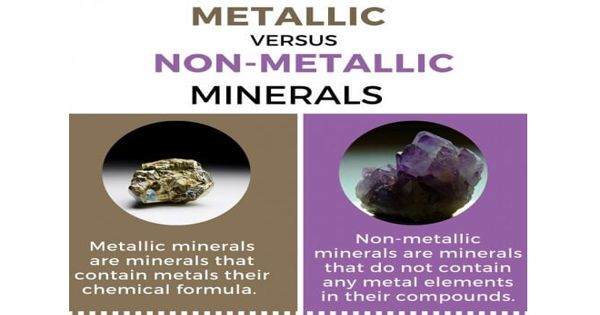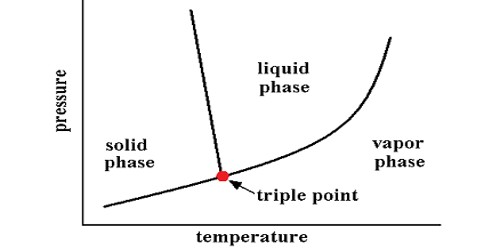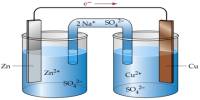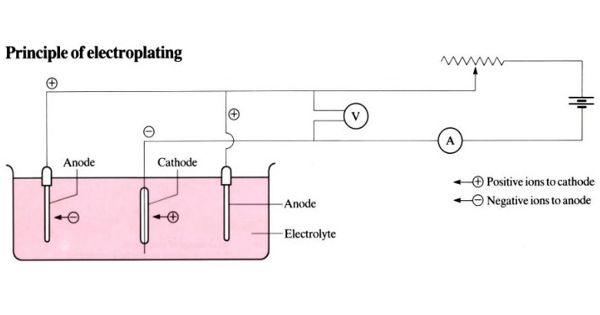Minerals are naturally occurring inorganic substances found under varying conditions and in different types of geological environments. It is broadly classified into two categories, i.e. metallic minerals and non-metallic minerals. Metallic Minerals are composed of one or more metallic elements whereas non-metallic minerals do not contain any metal elements instead they consist of chemical elements that usually don’t feature the properties or characteristics of metals.
Metallic Minerals are composed of metals in their original form, whereas no metals are found in non-metallic minerals. Non-metals are minerals that, as a rule, do not serve as raw material for the extraction of metal. The group of non-metals, which is widespread amongst the variety of minerals, is of great economic significance.
Metallic Minerals can be understood as the minerals in which metals are present in their original form. Conversely, non-metallic minerals, are those minerals that do not have metal content in them.
Difference between Metallic and Non-metallic Minerals

METALLIC MINERALS
- Metallic minerals refer to the minerals that comprise metals in raw form.
- Metallic minerals, as the name suggests, are minerals containing one or more metals. These usually occur as mineral deposits and are a great heat and electricity conductor, such as iron, copper, silver, bauxite, manganese, etc.
- As it is evident from the name itself, metallic minerals are the type of minerals that are composed of metals. These are hard substances, which are good conductors of heat and electricity. They have their own luster. Some examples of metallic minerals are Iron, copper, gold, bauxite, manganese, etc.
- Igneous and metamorphic rock formations contain metallic minerals.
- Hard metallic minerals can be used as gems in jewelry. These are also used in various industries for fulfilling various purposes, such as silicon (obtained from quartz), which is highly used in the computer industry, aluminum (obtained from bauxite) is used in the automobile and bottling industry.
- Metallic minerals do not break down into pieces when constantly hammered, as well as they have the ability to be drawn into thin wires.
NON-METALLIC MINERALS
- Non-metallic minerals imply the minerals, that do not have minerals in them.
- Non-metallic mineral reserves consist of quarries of stone and clay and sand pits; mineral deposits with chemical and fertilizer; salt deposits; quartz deposits, gypsum, natural gem stones, asphalt and bitumen, peat, and other non-metallic minerals other than coal and oil.
- Non-metallic minerals can be described as the minerals that do not comprise of metals. Some examples of non-metallic minerals are limestone, manganese, mica, gypsum, coal, dolomite, phosphate, salt, granite, etc.
- Non-metallic minerals can be found in sedimentary rocks and young fold mountains.
- Non-metallic minerals are used in various industries to manufacture different products; mica is used in the electrical and electronics industry, limestone is highly used in the cement industry. These are also used in the production of fertilizers and manufacturing refractories.
- Non-metallic minerals, usually break down into pieces, on hammering, and they cannot be drawn into wires or sheets.
















